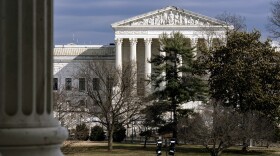Hawaii Governor David Ige says his proposed two-year spending plan reflects the difficult decisions forced on the state by the COVID-19 pandemic.
Previous projections show the state government facing a multi-billion dollar shortfall in the coming years. In a virtual news conference on Monday, Ige said he wants to cut $600 million in spending each year.
“The extent of the state’s projected revenue loss means that permanent and ongoing changes must be made to the way state government operates,” Ige cautioned.
He added that “regrettably we ae unable to shield our employees and priority programs from reduction.”
The proposed budget includes cuts to all departments, including the Kindergarten through 12th grade public education system and the University of Hawaii. Furloughs of two days per month starting in January are planned for state’s public workforce.
However, the cuts are not final. The state legislature has the ultimate authority to set spending levels and pass a budget, which Ige can then approve or veto.
Ige noted the extraordinary steps public officials have taken to try and avoid spending cuts, including the approval of general obligation bonds to fund ongoing expenditures for the first time ever.
The second-term governor also hinted at the possibility of delaying planned furloughs by several months or reducing some budget reductions, based on the details of a second relief package that was approved by Congress on Monday evening.
Expenses the state is currently planning on absorbing, including funding additional COVID-19 testing and vaccine acquisition and distribution, may be covered by funds.
“If collectively we can recover several hundred million dollars in federal appropriations, that would allow us to consider delaying or reducing the furloughs,” Ige noted.
He added that he would work with lawmakers in 2021 to revise the budget proposal based on the availability of federal funds or if additional revenue can be generated by raising taxes.



